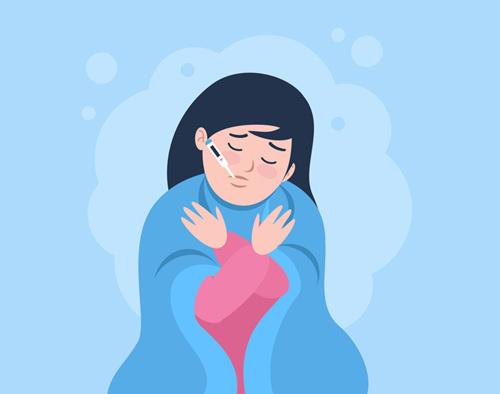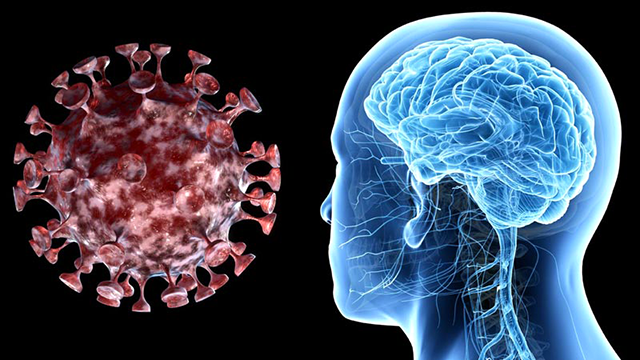You are here
Prolonged COVID-19 symptoms
By Family Flavours - Jul 25,2021 - Last updated at Jul 26,2021

Photos courtesy of Family Flavours magazine
“Post-COVID,” “Long COVID” and “Post-acute COVID-19 Syndrome” are the terms circulating to describe patients who continue to experience symptoms related to COVID-19 following the acute phase of infection. We turn to Al Marji’ Publications’ health experts to shed more light on this critical phase of the pandemic.
Are there long-term cardiovascular effects of COVID-19?
Dr Marwan Jumean, cardiologist, says a year and a half into the pandemic, we understand better the impact of COVID-19 on the cardiovascular system during an acute infection. While we still do not know the full extent of its impact, recent studies indicate that some long-term damage may occur. One such study from Germany reveals that there may still be an active inflammation of the heart muscle seen through an MRI test months after recovering from COVID-19 in patients with new or persistent symptoms.
Another study from Spain found that some patients still had an inflamed heart muscle or inflamed heart sac surrounding it. On rare occasions, the heart muscle may weaken and heart failure ensues.
Luckily, most COVID-19 patients recover fully without any noticeable long-term or damaging effect on the heart. Patients who recovered from a COVID-19 infection and are not experiencing symptoms do not have to worry. However, I recommend seeking medical attention if a patient has heart issues while hospitalised for COVID-19 or is experiencing symptoms after recovery.
What are the long-term effects of COVID-19 on the lungs?
Dr Khaled Asad, pulmonologist, says the respiratory system does more than move oxygen in and out of our lungs and it is most definitely affected by COVID-19. The many potential long-term effects of COVID-19 on the respiratory system include:
•Pulmonary fibrosis: We see many survivors of COVID-19 admitted to the ICU with long-term persistent fibrosis. We are still not sure about how this develops and what the future impact or the treatment is
•Significant oxygen therapy: Often required for patients with severe and critical disease, and upon discharge, their need for oxygen continues. Many require oxygen support for months and the duration varies from one person to the other
•Chest aches and pains: Despite normal test results, a person may continue to have symptoms of chest discomfort and shortness of breath
•Respiratory muscle weakness: Usually seen in patients hospitalised with pre-existing health issues
•Asthma: Even among non-asthmatic patients
•Dry cough: Very common by day five and it can linger for a long time. Some patients develop a cough after the disease is over
•Chronic infection: Fungal lung infection is seen in those who have significant lung disease and may need treatment with high doses of cortisone or even a ventilator
Could someone experience ‘Brain Fog’ from COVID-19?
Dina Halaseh, educational psychologist, says anyone might struggle with “brain fog” after illness and this is proving to be true with COVID-19 patients as well! Brain fog is not a scientific term but is used by people to explain what they’re feeling; you may feel confused, unfocused, slow or disoriented. It’s normal to experience this from time to time — imagine being exhausted after long hours of travel, not sleeping enough due to a crying infant, illness, or flu that makes you feel sluggish and not as sharp as usual.
COVID-19 has severe implications on the brain, some of which are extreme, such as strokes or lack of oxygen. But researchers are also finding that even some recovered patients face difficulty in sustaining attention. If you are worried about this, consult with your doctor to share symptoms to rule out any medical interventions. As a brain trainer, I recommend these tips to help you increase memory and attention:
•Exercising: Start slow and work your way to a minimum of 30 minutes at least five days a week
•Adopting a healthy diet: A well-balanced diet of fruits, vegetables, nuts and whole grains will help you focus
•Sleeping well: You want to be well rested and comfortable, so give your body the sleep it needs
•Trying brain-stimulating activities: They will help you focus on building and keeping a positive attitude
What is the link between COVID-19 and depression?
Haneen Mas’oud, clinical psychologist, says many changes were brought about by the pandemic that continue to affect people’s daily functioning, routine, connection with others and financial situation. Many are living uncertain lives. All of these factors contribute to depression and anxiety.
Symptoms include changes in or lack of sleep, increased appetite or not having an appetite at all, loss of interest in activities once enjoyed, lack of motivation and a sense of hopelessness. A post-COVID-19 patient may start overthinking, worrying and be easily provoked. Other symptoms include having trouble relaxing and fearing that something terrible is about to happen.
These signs are common and, to some extent, a normal reaction to an unfamiliar stressor, especially for those who develop post-COVID syndrome. Parosmia (a disordwer in which the odours of certain things are distorted) and conditions related to hearing, like tinnitus, can contribute to depressive and anxiety symptoms.
When we face a stressor like COVID-19 that leaves us with uncertainty, we are prone to develop symptoms that interfere with our daily life. It is normal to feel down during these difficult times. Still, if symptoms of depression and anxiety continue or increase, preventing one from functioning normally in certain areas of life, then it is time to consider seeking the help of family, friends and professionals.
Can COVID-19 impact my vision?
Dr Samir Mulki, consultant ophthalmic surgeon, says the eye is the window to our body. Many diseases that affect the body can affect the eye, and an ophthalmologist may discover the first signs of disease during a routine examination.
COVID-19 is no exception. Certain signs and symptoms may appear in the eye, and some complications of the disease may be found in the eye as well. The main ocular manifestations of COVID-19 are:
•Conjunctivitis is the first symptom. This is the inflammation of the tissue that lines the inside of the eyelid. Patients with confirmed COVID-19 may also test positive in their tears. The eye appears red and becomes itchy with secretions and tearing
•Kawasaki disease is a rare inflammatory disease of blood vessels in children. The first described case of this disease with COVID-19 infection was observed in a six-month-old baby girl. It causes inflammation inside the eye and corneal inflammation in the form of keratitis. The vitreous (the gel at the back of the eye) appears turbid and vision becomes dim. The optic nerve may appear swollen with bleeding and congestion
•Retinal disease due to diabetes inflicts patients with severe COVID-19 pneumonia. Sudden blurring of vision is experienced due to the aggravation of existing diabetic retinopathy or it may be the first sign of undiscovered diabetes mellitus
•Retinal lesions other than diabetic retinopathy:
oGlistening deposits in the retina
oRetinal haemorrhages
oThe blood vessels in the retina may become dilated
oCentral or branch retinal vein obstruction due to thrombus (blood clot) formation, which is also known to occur in other parts of the body like the lungs and kidneys in patients with severe COVID-19
•Eye surface disorders include dry eye and reduced blinking
•Diplopia (double vision) due to paralysis of one or more of the nerves responsible for moving the eyes in all directions. This may occur as a result of reduced blood flow in these nerves due to micro clot formation
Can children suffer long-term health effects from COVID-19?
Dr Kamal’ Akl, consultant paediatrician and paediatric nephrologist, says medical findings support the existence of Long COVID, even among children, after what seems to be a mild or asymptomatic illness. Multisystem Inflammatory Syndrome, in which damage occurs to multiple body organs, including the heart, brain, kidneys, eyes, skin and lungs, may develop in rare cases in children, following a mild case of COVID-19.
Other complaints which follow COVID-19 include chest pain, extreme tiredness, shortness of breath, insomnia, dizziness, diarrhoea, feeling sick, changes in smell and taste, rashes, headaches, muscle pains, joint pains, palpitations and nasal congestion. What is the significance of Long COVID? We still don’t know and only time will tell.
How have lockdowns and restrictions affected children’s oral health?
Dr Sahar Jumean, paediatric dentist, says COVID-19 has meant delays in seeking and receiving dental care for many families, sometimes leading to very simple and easily treatable conditions becoming complicated because dental issues often do not resolve on their own. Therefore, maintaining excellent oral hygiene is imperative during these times. To prevent dental problems, follow these simple steps:
•Brushing teeth regularly: With extended lockdowns, online schooling and the absence of a familiar routine, families are faced with a new norm of chaos. Therefore, it is imperative to brush and supervise your child’s tooth brushing with fluoride toothpaste twice a day in the mornings and before bedtime for a minimum of two minutes at a time
•Limiting snacking: Diet affects dental health. Simple carbohydrates are sugars and can cause cavities. Frequent snacking between meals can cause dental decay. With kids being home for extended periods and in the absence of adequate hygiene, teeth become more susceptible to decay
•Dental check-ups: Ensure that your child’s dentist and dental office comply with government recommendations to ensure safety. Regular preventive care in the form of cleaning, fissure sealants and fluoride application can help keep your child’s pearly whites cavity-free. Make sure schedule an appointment for your child if she or he complains of pain or you see any cavities — delays could mean infections and complicated treatments in the future
Reprinted with permission from Family Flavours magazine
Related Articles
PARIS — Potentially fatal COVID-19 complications in the brain including delirium, nerve damage and stroke may be more common than initially
PARIS — More than three quarters of people hospitalised with COVID-19 still suffered from at least one symptom after six months, according t
WASHINGTON — A pattern is emerging among COVID-19 patients arriving at hospitals in New York: Beyond fever, cough and shortness of breath, s

















